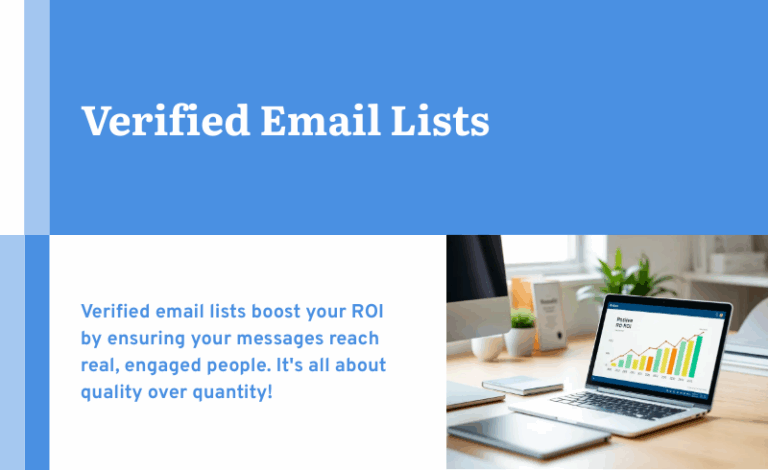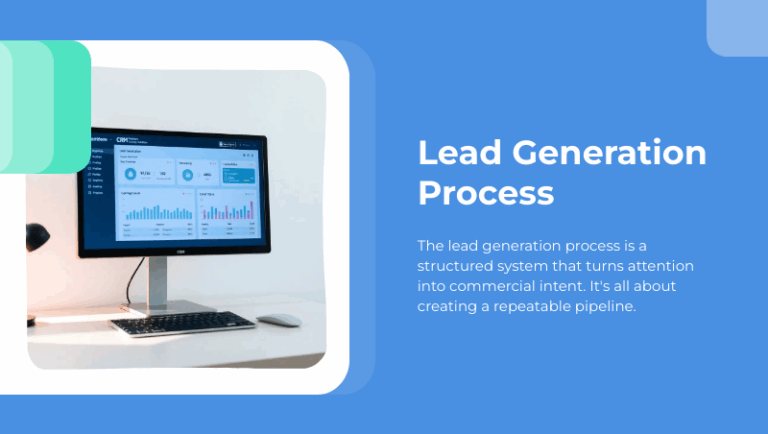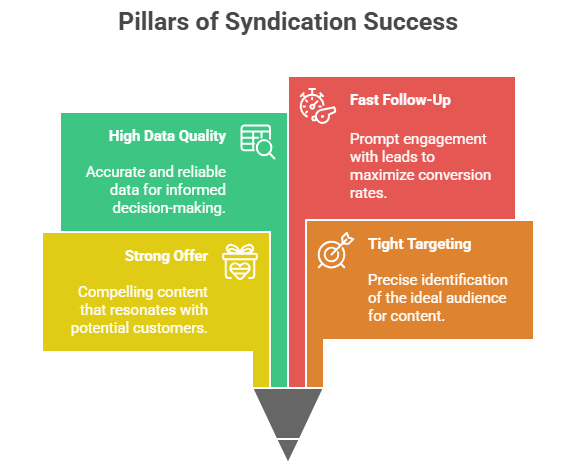

B2B marketing has changed dramatically over the last decade, but one thing has stayed consistent: great content still drives great results. Whether you’re creating whitepapers, webinars, research reports, or in-depth guides, content remains the engine behind awareness, trust, and pipeline.
But here’s the real challenge many companies run into: you can create the best content in your industry, but if the right people never see it, it can’t generate leads, conversions, or revenue.
That’s where B2B content syndication becomes a game-changer.
Content syndication ensures that your content doesn’t just live on your website. Instead, it gets distributed onto trusted external platforms, places where your ideal buyers already spend time researching solutions. This increases your visibility, produces higher-quality leads, and multiplies the value of every content asset you’ve created.
Understanding B2B Content Syndication
B2B content syndication is the process of distributing your content; such as whitepapers, eBooks, blog posts, webinars, or reports across third-party websites and platforms in order to reach a broader, more targeted audience.
Think of it like expanding your brand’s footprint. Instead of waiting for someone to land on your website, you meet your audience where they already are.
Why B2B Content Syndication Is So Important Today
B2B buyers are doing more research than ever before. In fact, modern buyers often consume 10–20 pieces of content before engaging with a salesperson. They rely heavily on trusted publications, industry sites, and partner networks to help them understand their challenges and evaluate solutions.
This shift means:
● Buyers aren’t always finding content through organic search.
● Social algorithms make reach inconsistent.
● Ads can be expensive and unpredictable.
B2B content syndication solves all three problems.
It places your content directly in front of precisely the types of professionals who can benefit from it; decision-makers, influencers, researchers, IT leaders, procurement managers, and executives across relevant industries.
Because the content appears on platforms people trust, it also benefits from the credibility of the host site.
The Main Goals of Content Syndication
While syndication helps with many aspects of marketing, its core goals include:
● Increasing visibility and brand awareness
● Generating high-quality leads
● Driving more early-stage engagement
● Supporting long-term nurturing efforts
● Establishing thought leadership
● Boosting ROI on content you’ve already created
Syndication isn’t about reinventing your content, it’s about leveraging it intelligently.

How B2B Content Syndication Works
Even though B2B content syndication involves distribution across external platforms, the process is surprisingly simple once you understand the flow.
1. Identify Content Worth Syndicating
Not all content performs equally well in syndication. High-value, educational content usually produces the best results because it addresses buyer pain points and provides guidance—not a sales pitch.
Top performing formats include:
● Whitepapers
● Analyst reports
● eBooks
● Case studies
● On-demand webinars
● Industry surveys
● Benchmark reports
These assets resonate because they help buyers learn, compare options, and make informed decisions.
2. Choose a Syndication Partner
A syndication partner is the platform or network that will distribute your content. Partners vary widely, but many fall into these categories:
● Industry news publications
● Technology review sites
● Professional communities
● Lead-gen databases
● Media agencies
● Content hubs
● Programmatic distribution platforms
Each partner provides access to audiences that fit your ideal customer profile (ICP), which helps ensure that your content reaches relevant professionals.
3. Select Targeting Criteria
This step is critical. Strong targeting ensures that the leads generated from syndication actually match your ICP.
Targeting options often include:
● Industry
● Company size
● Job role
● Seniority level
● Geography
● Technographic data (e.g., software they use)
● Intent signals
The more precise your targeting, the better your lead quality.
4. Publish or Distribute the Content
Depending on the campaign type, your content might be:
● Posted directly on a partner’s website
● Sent through a partner’s email list
● Delivered through a programmatic network
● Linked within a newsletter
● Featured in resource libraries
Many partners also use a gated form to collect lead information before allowing downloads.
5. Capture and Deliver Leads
Once a user engages with your content, their information is captured and delivered to you. Lead data may include:
● Full name
● Business email
● Job title
● Company name
● Company size
● Region
● Engagement history
● Topic interest
These leads are typically mid-funnel and require nurturing before sales engagement.
6. Nurture Leads and Track Results
Syndicated leads should never be thrown directly to sales unless your campaign targets bottom-of-funnel prospects. Instead, nurture them through:
● Email workflows
● Retargeting sequences
● Follow-up content
● Personalized drip campaigns
This transforms content consumers into educated, sales-ready prospects.

Types of B2B Content Syndication
Every organization uses syndication differently depending on their goals, budget, and timeline. Below are the most common types used in B2B marketing.
Free (Organic) Content Syndication
Free syndication is when your content is republished on other websites without a fee. Common channels include:
● Guest posting
● LinkedIn articles
● Medium
● Community blogs
● Partner content exchanges
While free syndication expands reach, it typically doesn’t generate direct leads or allow precise targeting. Its primary benefits are visibility, brand awareness, and SEO support.
Paid Content Syndication
Paid syndication partners guarantee distribution to a relevant audience, often with built-in lead capture.
The benefits include:
● Lead guarantees
● Firmographic targeting
● Intent-based matching
● High-precision filtering
● Detailed reporting
Paid syndication is one of the most effective methods for filling the top of the pipeline with qualified contacts.
Email-Based Syndication
Some syndication partners send your content directly to their email subscribers or segmented lists. This is highly effective because:
● Email audiences are already engaged
● Content is sent to targeted decision-makers
● You benefit from the partner’s brand trust
This can generate both awareness and direct leads.
Programmatic Syndication
Programmatic syndication uses automated algorithms, AI, and intent data to deliver content across multiple channels. Your content appears:
● On websites
● In content feeds
● In targeted content hubs
● Across industry platforms
Programmatic methods are scalable and data-driven, making them ideal for large campaigns.
Lead-Generation Syndication
This type focuses specifically on collecting lead data. Platforms gate your content and deliver only verified contacts.
It’s the most common format for businesses aiming to fill demand-generation pipelines quickly and efficiently.

Benefits of B2B Content Syndication
Content syndication offers several advantages that are difficult to achieve through organic content alone. Below are the most important benefits for B2B organizations.
Expanded Reach to Ideal Buyers
Instead of hoping your audience finds your content, syndication places it where they already are. This significantly increases exposure among:
● Decision-makers
● Buyers researching solutions
● Industry professionals
● Influencers within organizations
This expanded reach is essential for brands that are still building their organic authority.
Improved Lead Quality
Because syndication partners use filters such as firmographics and intent signals, the leads you receive are far more likely to match your ICP. This means:
● Less wasted time
● Higher conversion rates
● Better sales efficiency
● More predictable ROI
Strong targeting reduces noise and elevates lead quality.
Supports Account-Based Marketing (ABM)
B2B content syndication fits naturally into ABM campaigns. With account-based targeting, your content can reach:
● Target account lists
● Specific job roles
● Decision-making committees
This makes syndication an excellent way to warm up accounts before personalized outreach.
Maximizes the ROI of Your Content
Creating great content takes time, research, and resources. Syndication ensures that your content continues working long after its initial release.
Instead of creating “one-and-done” assets, syndication:
● Extends lifespan
● Boosts visibility
● Multiplies engagement
● Improves ROI
It’s one of the most efficient ways to repurpose content strategically.
Accelerates the Sales Cycle
Prospects who download syndicated content often:
● Understand the problem better
● Know the terminology
● Have researched potential solutions
● Are more aware of industry challenges
This makes sales conversations easier and more productive.

Best Practices for B2B Content Syndication
To get the most value from syndication, companies should follow certain best practices that improve performance and protect investment.
Choose Content Based on Buyer Value
The best syndicated content:
● Solves a real problem
● Offers educational insights
● Is vendor-neutral
● Provides actionable guidance
● Supports early to mid-funnel buyers
Avoid overly promotional content, which discourages engagement.
Refine Your Ideal Customer Profile
Syndication works best when your ICP is clearly defined. Include details such as:
● Industry
● Company size
● Technology stack
● Department
● Job level
● Revenue range
Better ICP clarity leads to better lead quality.
Evaluate Partners Thoroughly
Look for partners that offer:
● Transparent performance data
● Lead verification processes
● Spam and fraud filtering
● Responsive support
● Clear targeting options
Reputable partners protect your brand and maximize your results.
Create a Strong Lead Nurture Sequence
Syndication leads should enter a well-structured workflow that includes:
● Email drips
● Case study follow-ups
● Product tours
● Testimonial content
● Webinar invites
This moves prospects deeper into the funnel.
Track Performance Beyond Cost Per Lead
While CPL is important, it’s not the only indicator of success. Track:
● SQL conversion rates
● Pipeline contribution
● Content engagement
● Account match-rates
● Sales feedback
This ensures that quality, not just volume, is driving decisions.
Common Mistakes to Avoid
Many first-time syndication users make predictable mistakes that limit results. Avoid these to get the best ROI.
Using Sales-Focused Content
Promotional content drives poor engagement and low-quality leads. Educational content performs significantly better.
Ignoring Lead Nurturing
Syndication leads aren’t typically ready to talk to sales immediately. Without nurturing, most leads go cold.
Choosing Partners Based on Volume Instead of Quality
A high number of leads doesn’t guarantee results. Quality matters far more than quantity.
Not Leveraging Intent Data
Intent-driven syndication improves:
● Targeting
● Lead accuracy
● Conversion likelihood
Without intent signals, campaigns rely too heavily on broad demographics.
Failing to Evaluate Results Holistically
Looking only at initial downloads can lead to the wrong conclusions. Evaluate leads across the entire funnel.
How to Choose a B2B Content Syndication Partner
Selecting the right syndication partner is essential for campaign success.
Look for Audience Relevance
The partner’s audience should closely align with your ICP. Ask for:
● Sample lists
● Firmographic breakdowns
● Industry segments
● Historical performance data
Reliable partners will provide these willingly.
Assess Their Targeting Capabilities
Advanced partners allow you to segment by:
● Technographics
● Intent signals
● Buyer roles
● Revenue bands
● Industry verticals
Better targeting = better leads.
Demand Lead Quality Guarantees
High-quality partners offer:
● Verified contact details
● No duplicates
● GDPR-compliant processes
● Strict data hygiene
This protects your CRM and sales team.
Evaluate Reporting and Transparency
Partners should provide clear reporting on:
● Delivery metrics
● Engagement
● Lead source
● Pipeline movement
Transparency builds trust and improves optimization.

How to Measure Success in B2B Content Syndication
To ensure your campaigns deliver real value, monitor these key performance indicators.
CPL (Cost Per Lead)
Useful for budgeting and forecasting—but not the only metric.
Lead Quality
Evaluate fit based on:
● Job title
● Company size
● Industry
● Account match
Good campaigns produce leads aligned with your ICP.
Lead Engagement After Download
Track how syndication leads behave once they enter your system:
● Email engagement
● Website visits
● Requesting demos
● Webinar attendance
This helps measure buyer intent.
Pipeline Contribution
One of the strongest indicators of success is how many syndicated leads convert to:
● MQLs
● SQLs
● Opportunities
● Closed-won deals
A full-funnel view gives the clearest picture.
Sales Feedback
Always gather input from account executives. They can identify patterns or quality issues early.
FAQ: B2B Content Syndication
1. What exactly is B2B content syndication?
It’s the process of distributing your content across external websites and platforms to reach a larger, more targeted audience and generate qualified leads.
2. Does content syndication hurt SEO?
No—when done correctly, partners use proper canonical tags or summary pages to avoid duplicate content issues.
3. What types of content perform best?
Educational assets such as whitepapers, webinars, case studies, benchmark reports, and industry guides usually produce the highest engagement.
4. How do I generate leads through syndication?
Leads submit a gated form before accessing your content. This form captures their contact and firmographic data.
5. How quickly do syndicated leads convert?
Syndicated leads are typically mid-funnel, so they convert faster than cold lists but still require nurturing before sales outreach.
6. How do I choose a reputable syndication partner?
Look for transparent reporting, audience relevance, strict verification processes, and strong targeting options.
7. How do I measure campaign success?
Track CPL, lead quality, engagement, contribution to pipeline, and sales feedback to get a full performance picture.
8. Do syndicated leads need nurturing?
Yes—nurturing is essential. Sending them case studies, product guides, and follow-up emails helps progress them through the funnel.
9. How much does syndication typically cost?
Costs vary by partner and targeting but usually range from $30–$120 per lead.
10. Is B2B content syndication worth it?
Absolutely—when done with the right content and targeting, it consistently drives high-quality leads and strong pipeline results.



